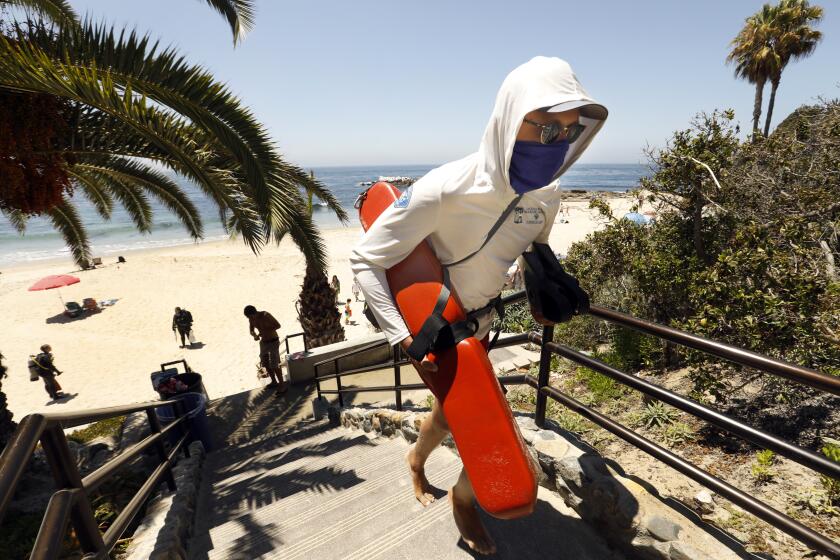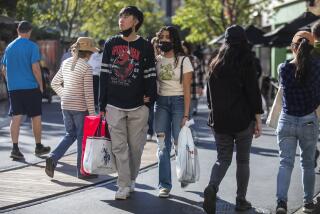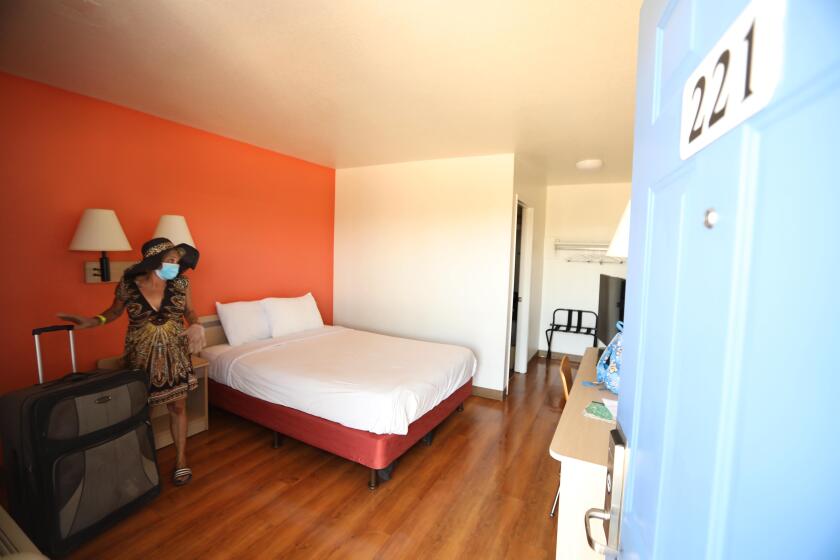Southeast L.A. already faced many ills. Now it’s the epicenter of coronavirus
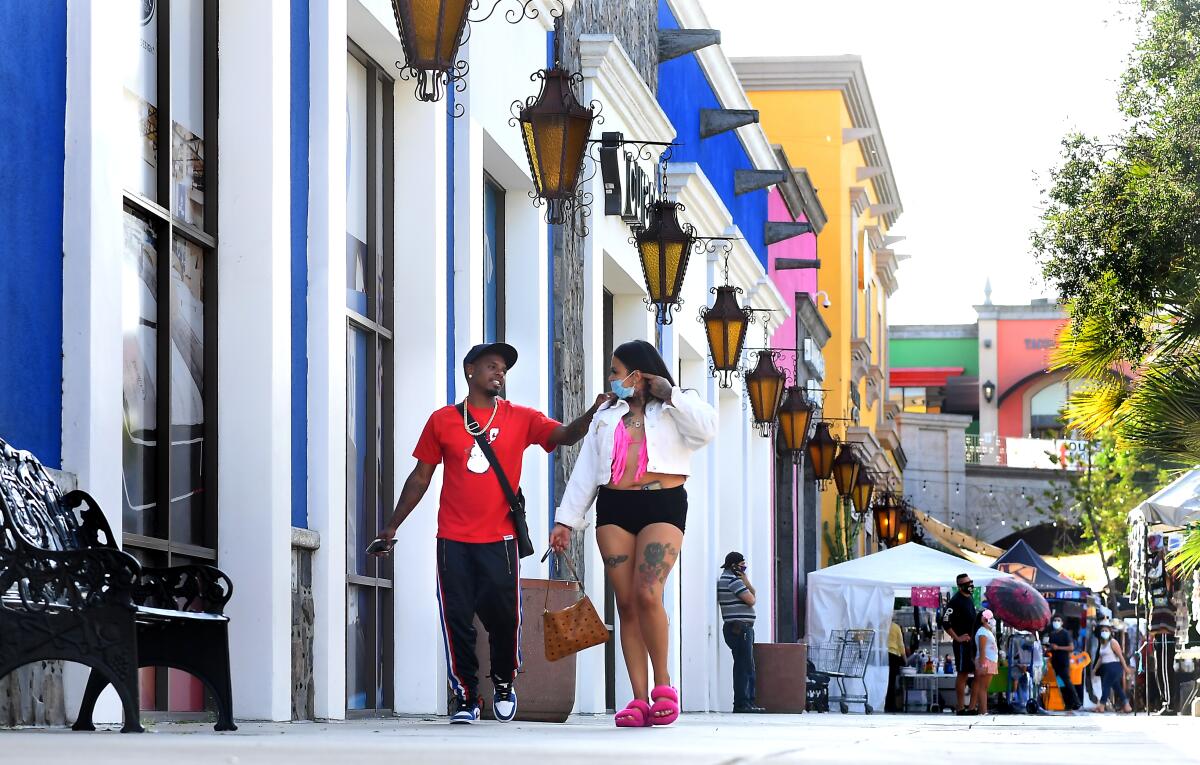
Southeast Los Angeles County has become the epicenter for the resurgence of the coronavirus, according to a Times analysis of county health data that found infections skyrocketing in its mostly working-class Latino communities.
The sharp increase since the economy reopened around Memorial Day shows the virus is spreading rapidly through factories, stores and other workplaces and into communities with higher rates of poverty, more crowding and many essential workers who make the economy tick. Hit hard by job losses during the shutdown, they are increasingly suffering from the virus itself.
The region reported more than 27,000 new COVID-19 cases over the last two months, the most in the county. The area now accounts for 19% of new infections, although it comprises just 12% of the countywide population, the Times analysis shows. That vaulted its once-modest infection rate into one of the highest in the county, and just below the already hard-hit Eastside and South L.A. areas, according to the Times analysis through Aug. 2
The trend is part of a statewide spike in infections among Latinos, both in rural, farm-working communities and urban areas. It’s only the latest burden for a corner of Southern California long beset by pollution from nearby industry, a lack of access to healthcare and a host of other ills.
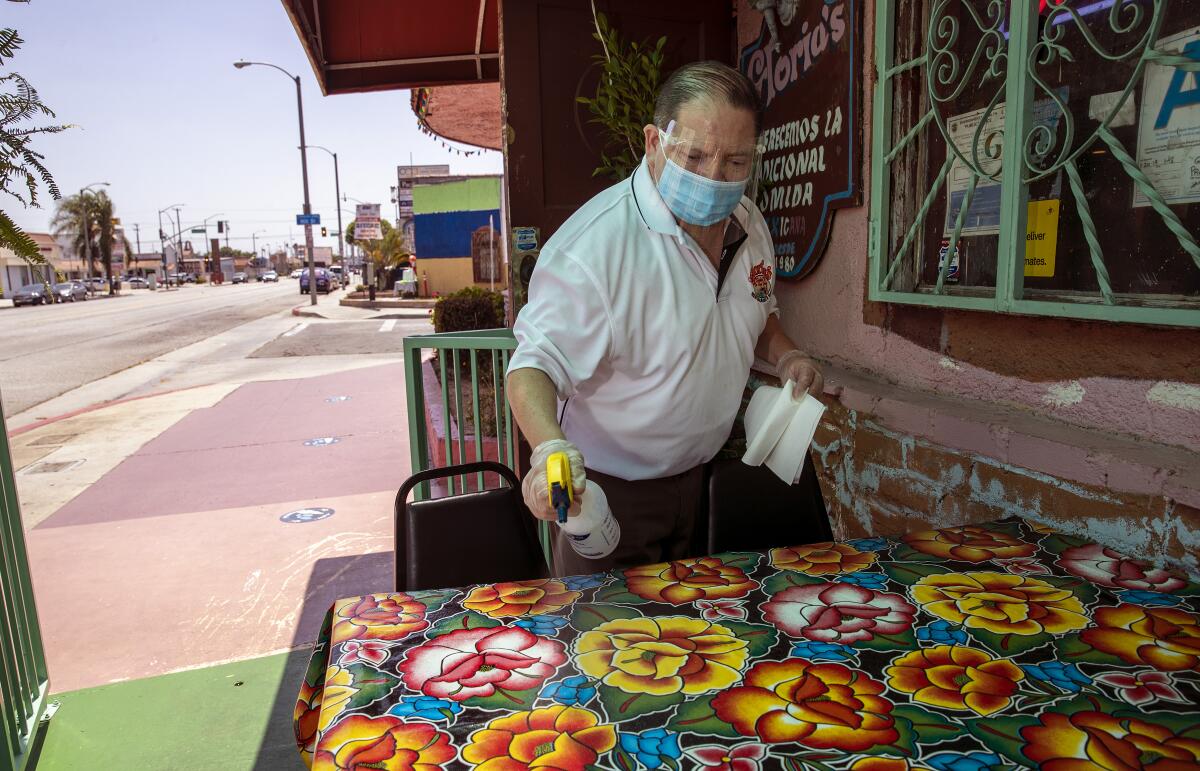
The southeast region, with 1.2 million people living in more than a dozen communities along the 710 and 605 freeways, has seen infection rates jump to some of the highest in the county, including Maywood, Huntington Park, South Gate, Cudahy and Lynwood. The area is home to many low-wage, front-line workers, and residents there are more likely to live in overcrowded, multigenerational households — key risk factors in the accelerating spread of the virus, according to experts.
By contrast, the more affluent and majority-white Westside — which early in the outbreak reported higher infection rates because of travel abroad and better access to testing — recorded about 3,000 new cases and showed a much slower increase, the Times analysis found.
Technical glitches with the state’s system for analyzing test results have led to flawed reporting of infection rates.
As illnesses and deaths mount and disparities widen in the nation’s most populous county, the toll of the virus looks increasingly like a map of where many working-class Latinos live. It’s a shift health experts and local officials predicted months ago.
“We expected that the COVID cases would sweep out of Beverly Hills and Brentwood and Bel-Air and down into the more exposed areas,” said David Hayes-Bautista, professor of medicine at UCLA and director of the Center for the Study of Latino Health and Culture. “It’s done that exactly, following the line of least resistance.”
Hayes-Bautista, who is tracking the growth in cases per capita across California, said there was a “fateful period” between Memorial Day and Fourth of July when infection rates among Latinos more than doubled, increasing more than any other racial or ethnic group. It’s not the second wave of the virus, he said. It “is like the 1.5 wave,” driven largely by workers contracting the virus and bringing it home, Hayes-Bautista said.
Stay-at-home orders and other aggressive measures imposed early in the pandemic had a “huge blind spot,” Hayes-Bautista said. They overlooked those who kept working as meat processors, delivery drivers, grocery clerks, construction workers and other essential jobs — work often performed without N95 masks, or other protections — and enabled white-collar workers to shelter at home.
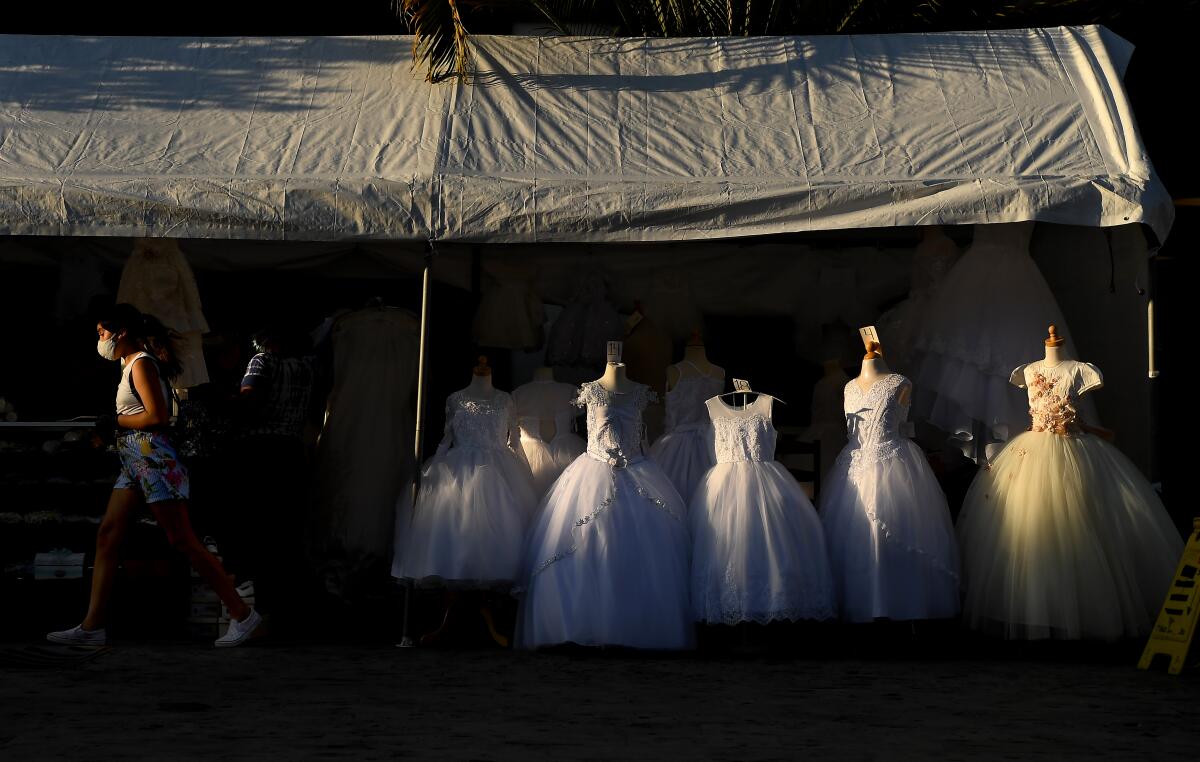
State and local leaders have pledged to do more to protect essential workers and Latinos, who in L.A. County are about twice as likely to have been infected by the virus as whites. County health officials believe the coronavirus is spreading rapidly in workplaces that are violating safety rules, but have been slow to ramp up testing in the hardest-hit neighborhoods, enforce infection control measures such as mask-wearing and physical distancing and have repeatedly failed to detect outbreaks before they spread widely.
Experts say that people living in areas like southeast L.A. County, where the coronavirus has killed more than 650 people to date, are now paying the price for too little focus on the protection of workers and their families.
“I think all the attention has been on people hanging out in bars and restaurants,” said Manuel Pastor, a professor of sociology at USC. “But someone is working the back rooms in those places as well as continuing to go to construction sites, ride public transit, and head home to overcrowded households.”
Since the reopening began in late May, the virus has generally moved eastward, with infection rates also rising sharply in communities across the San Gabriel and Pomona valleys with large Latino populations, a lot of essential workers and higher rates of crowding.
Across the county, areas with the highest poverty rates are experiencing infection rates that are nearly five times higher than areas with the lowest poverty figures. That gap has widened in recent weeks as wealthier areas have seen much slower growth in case numbers.
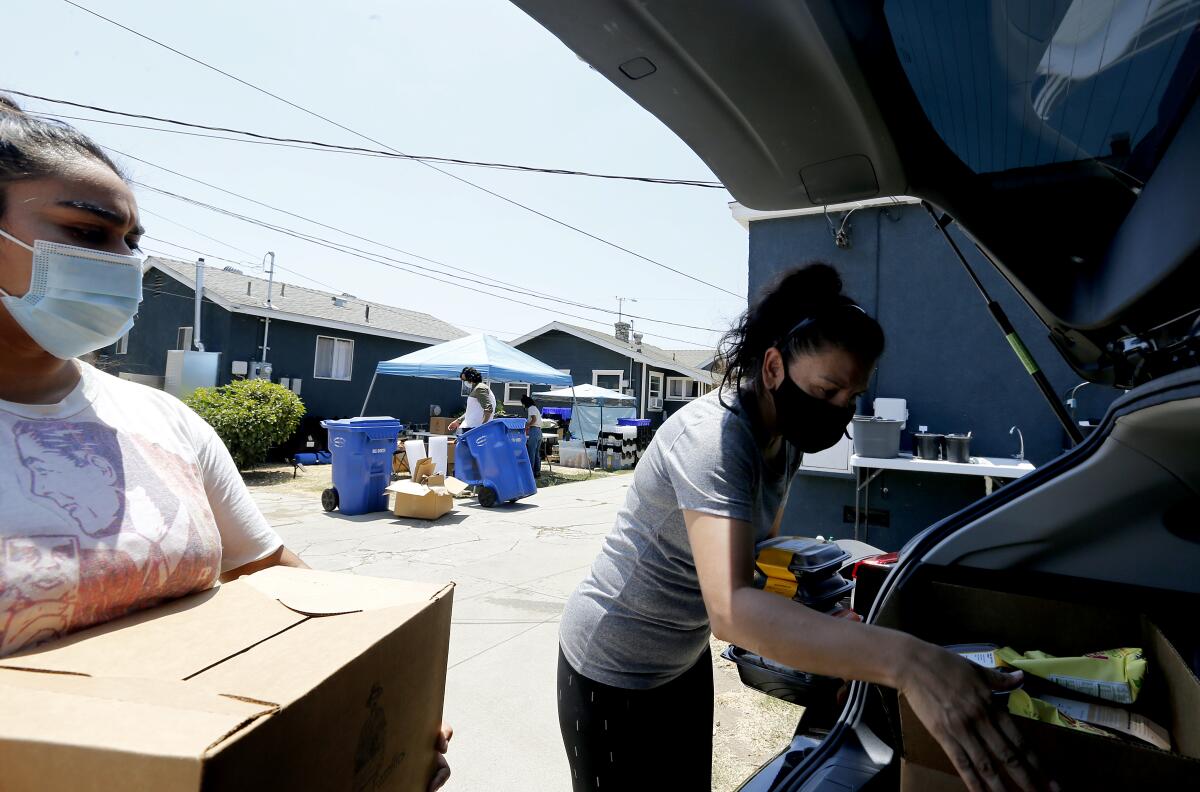
To calculate that disparity, The Times compared neighborhoods in which more than 25% of the population was living below the poverty line — defined by the Census Bureau as a family of four making less than $26,000 a year — to those in which the poverty rate was lower than 5%.
Many of the same areas seeing sharp increases in infections also have some of the most crowded housing conditions in the nation. Some of the worst-hit communities, such as Huntington Park, El Monte and Pomona have ZIP Codes that rank in the top 1% nationwide that are considered “crowded” — having more than one person per room, excluding bathrooms, an analysis of Census Bureau data shows.
Public health officials and researchers have warned that overcrowded housing could play a role in accelerating the spread of the disease. About 3.3% of housing units are considered crowded, and L.A. County is home to five of the 10 most-crowded ZIP Codes in the U.S.
In L.A. County, the analysis found that the confirmed case rate increased by nearly 900 infections per 100,000 people for every additional 10% of residents who live in crowded conditions in a neighborhood.
L.A. County Supervisor Hilda Solis, whose predominantly Latino district covers much of the southeastern part of the county hit hardest by the recent infections, said she has worked to add new testing sites in South Gate, Montebello and Azusa while expanding capacity at existing locations in Pomona, El Monte and East Los Angeles. All those areas have had relatively high infection rates over the last two months.
“While this is great news, more resources are needed to address the root of these disparities — not just the symptoms,” Solis said. “Our low-income communities also need protections at their workplaces, access to quarantine sites, culturally-competent contact tracing, food security, and rental assistance.”
The people of southeast L.A. County have for decades confronted one environmental affront after another, including high levels of pollution from freeways, rail yards and toxic sites, the Exide battery recycling plant that contaminated half a dozen communities with poisonous lead and a Delta jet that dumped fuel over homes and schools earlier this year.
“Our communities are in severely contaminated areas where the air quality is no good,” said Lynwood Mayor Aide Castro. “Just here in Lynwood we have the 710, the 105 [freeways] and the Alameda Corridor, so our community tends to suffer a lot of respiratory problems.”
Castro blamed the surge in infections on a rushed reopening that heightened risks to its mostly working-class residents, who are 88% Latino.
Castro, traces the increase in cases in her city of 70,000 back to Memorial Day, when she said “politicians felt the pressure and made a bad decision to reopen.”
She owns a beauty salon in nearby Maywood that remains shut down and said she has no plans to reopen until it’s safe again.
”Even though it’s affecting me financially, we have to be honest and say getting your hair done is not essential,” she said. “We the politicians, the legislators, we should not have allowed for things to reopen as fast as they did, and now we’re suffering the consequences.”
Buddy to Buddy Southeast LA, a mutual aid group that formed to deliver groceries and offer emotional support to elderly residents isolated during the shutdown, is increasingly helping families that are struggling because they have come down with the virus themselves.
“They have multiple people infected. These are families with kids and with grandparents,” said Ryan Jordan, 31, a member of the group said on a recent afternoon while working to load deliveries into volunteers’ cars from a small patch of yard outside his East L.A. bungalow. “It’s infuriating to see these communities not have the resources to even protect themselves.”
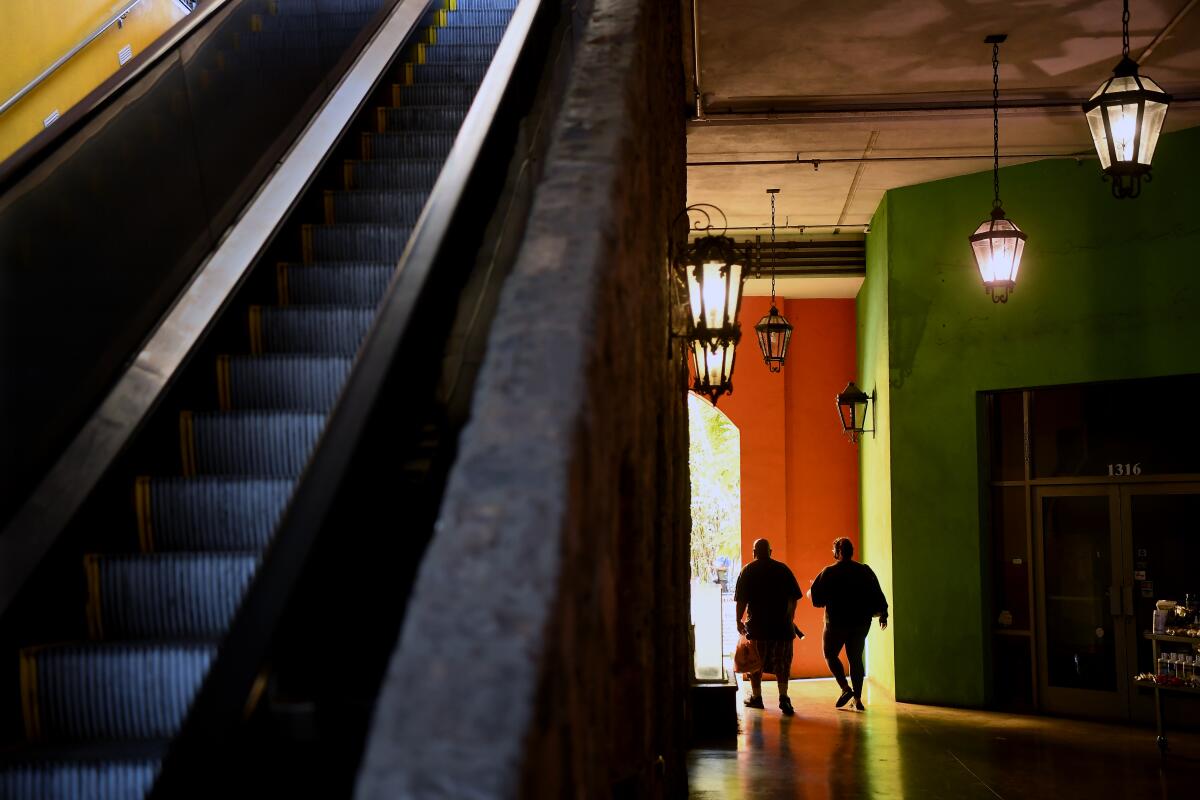
A survey of 500 residents of southeastern L.A. County, conducted in mid-May by the polling firm Latino Decisions with Cal State L.A.’s Pat Brown Institute and the nonprofit SELA Collaborative, found that 75% of respondents had someone in their household who had lost their job or had work hours cut. More than 1 in 5 respondents had friends or family who had become ill because of the coronavirus and 41% had someone in their household who was continuing to go to work outside of the home.
In Cudahy, where 96% of the city’s 24,000 residents are Latino, Mayor Elizabeth Alcantar said she has heard from residents who are fearful of being exposed at work, but are also worried about testing positive and being forced to stay home and lose a paycheck. Immigrants make up nearly half of Cudahy’s population, she said, and many did not qualify for federal stimulus checks.
“So we saw people going back to work, and then coming right back within a week because either themselves or another member of their team was infected,” she said. “It’s like the dynamic of a yo-yo.”
Alcantar said she has spoken to families with as many as 10 to 15 people in their household that started off with one person feeling sick but ended up with everyone infected. “That ends up being a huge difference whether people will be affected, will they get help, and even survival.”
More to Read
Start your day right
Sign up for Essential California for news, features and recommendations from the L.A. Times and beyond in your inbox six days a week.
You may occasionally receive promotional content from the Los Angeles Times.
